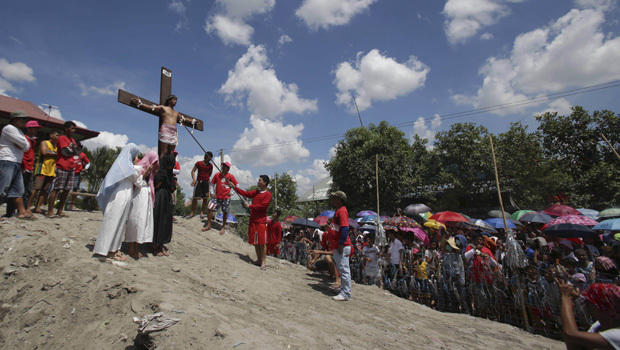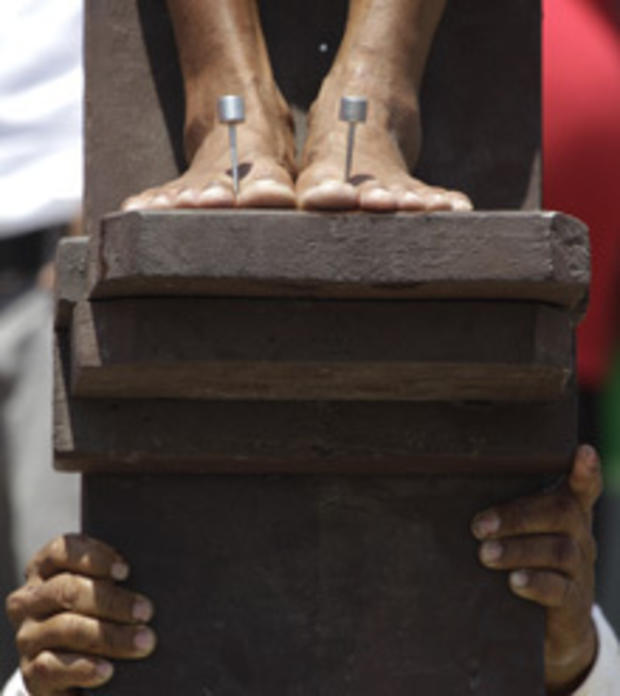Filipinos re-enact bloody crucifixion of Christ
SAN PEDRO CUTUD, Philippines Devotees in villages in the northern Philippines took part in a bloody annual ritual to mark Good Friday, a celebration that mixes Roman Catholic devotion and Filipino folk beliefs and sees some reenact the crucifixion of Jesus Christ.
The crucified devotees spent several minutes nailed to crosses in Pampanga province while thousands of tourists watched and took photos of the spectacle, which the church discourages. Earlier in the day, hooded male penitents trudged through the province's villages under the blazing sun while flagellating their bleeding backs with makeshift whips. Others carried wooden crosses to dramatize Christ's sacrifice.
Devotees undergo the hardships in the belief that such extreme sacrifices are a way to atone for their sins, attain miracle cures for illnesses or give thanks to God.
Alex Laranang, a 58-year-old vendor who was the first to be nailed to a cross Friday, said he was doing it "for good luck and for my family to be healthy."
It was the 27th crucifixion for sign painter Ruben Enaje, 52, one of the most popular penitents from San Pedro Cutud village. He began his yearly rite after surviving a fall from a building.
Enaje screamed in pain as men dressed as Roman soldiers hammered stainless steel nails into his palms and feet. A wireless microphone carried his voice to loudspeakers for everyone watching to hear.
His cross was raised and he was hanged there for several minutes under the searing afternoon sun before the nails were pulled out and he was taken on a stretcher to a first aid station.
"It's intriguing and fascinating what makes people do something like this, how you can believe so much that you make yourself suffer to that extent," said Dita Tittesass, a tourist from Denmark.
Remigio de la Cruz, the chief of San Pedro Cutud village, explained that the practice began in his village in the 1950s.
Archbishop Jose Palma, president of the Catholic Bishops Conference of the Philippines, told the church-run Radio Veritas that the practice is "not the desire of Jesus Christ."
"We are aware that this has been practiced long before ... but we still hope that this will not be done any more," he said. "We should all concentrate on prayers."

